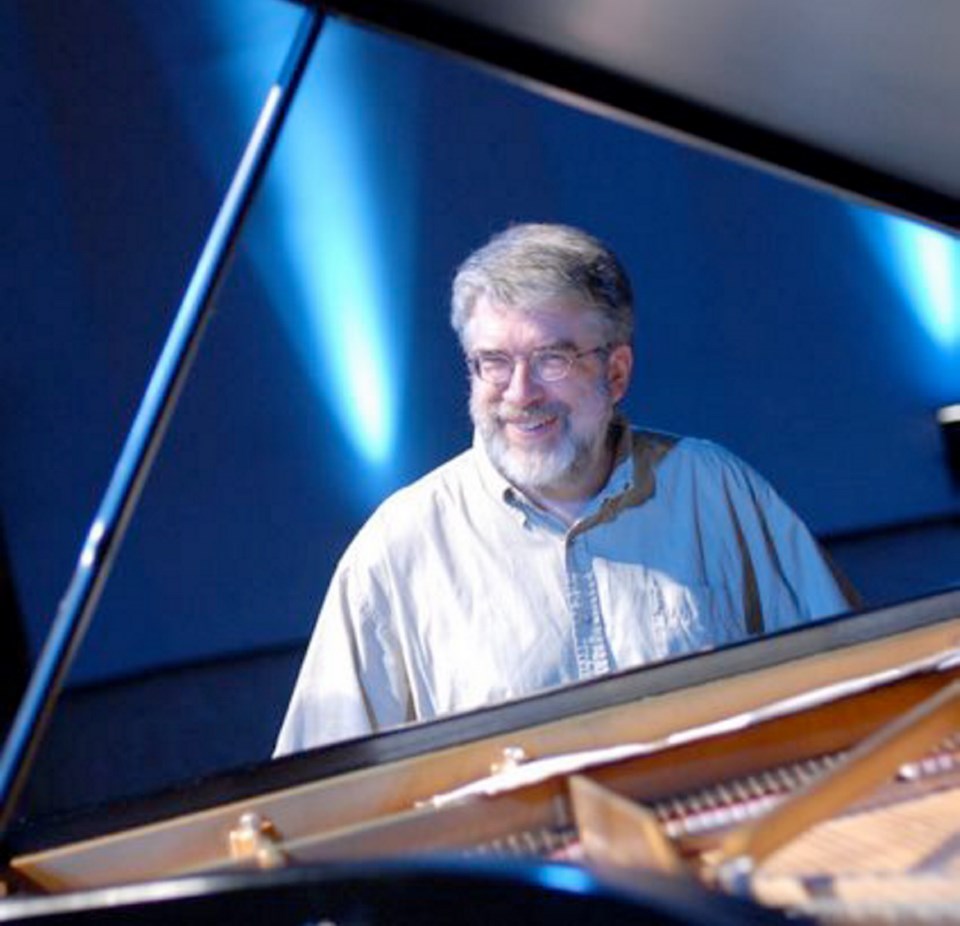What: Bruce Vogt, piano
When/where: Friday, 8 p.m., Phillip T. Young Recital Hall (School of Music, MacLaurin Building, University of Victoria)
Tickets: $18, seniors, students and alumni $14. Call 250-721-8480; online at tickets.uvic.ca
What: Early Music Society of the Islands: Back before Bach, with Piffaro
When/where: Saturday, 8 p.m., Alix Goolden Hall; pre-concert talk at 7:10
Tickets: $30, seniors and students $25, members $22, student rush $8. Call 250-386-6121; online at rmts.bc.ca; in person at Ivy’s Bookshop, Long & McQuade, Munro’s Books and the Royal and McPherson box office
Bruce Vogt is in his 25th year as head of the piano department in the University of Victoria’s School of Music, where he has taught since 1980. But his activities as performer, teacher and adjudicator frequently take him out of town, and not just around B.C. Over the past few years, he has been as far as the U.K., Germany, Japan and China.
The solo recitals Vogt has recently given here have focused on major figures in the standard repertoire. In 2011, for instance, he offered a series of three recitals to celebrate the bicentenary of the birth of Liszt, the composer with whom he has been most closely associated. He gave an all-Debussy program in 2012, an all-Schubert one in 2014. His most recent local recital, last February, comprised Mozart, Schubert and Liszt.
On Friday, as part of the School of Music’s Faculty Concert Series, Vogt will explore two more big names: Haydn and Beethoven.
The two halves of the program are nicely contrasted. The music of the first half is more entertaining, that of the second half more serious, profound and innovative.
The first half includes an early sonata by each composer in which we might perceive the influence of comic opera: Haydn’s No. 46, in A-flat major, and Beethoven’s Opus 10/No. 3, one of the most ambitious of his early sonatas.
The second half begins with Haydn’s Sonata No. 20 in C Minor, from 1771, which was a milestone. It was Haydn’s first keyboard sonata in a minor key, the first one definitely intended for the piano rather than the harpsichord and the first one he called a sonata. (His earlier ones bore the less lofty designation “divertimento.”)
The program culminates in Beethoven’s penultimate sonata, Op. 110 in A-flat major, completed in 1822. This highly experimental rethinking of Classical sonata form is practically a catalogue of the later Beethoven’s musical preoccupations — vocal-style lyricism, proto-Romantic piano writing, parody, recitative, fugue.
Audio of Vogt’s recital will be streamed online through UVic’s Listen! Live program at finearts.uvic.ca/music/events/live/live.html.
On Saturday, Piffaro will perform here for the first time since 2005, under the auspices of the Early Music Society of the Islands and co-sponsored by the recently formed Ancient Music Society of Victoria.
Founded in 1980 and based in Philadelphia, this internationally admired ensemble “recreates the rustic music of the peasantry and the elegant sounds of the official wind bands of the late Medieval and Renaissance periods.”
The word piffaro, an Italian cognate of fife, was used from at least the 15th century to denote a woodwind instrument (usually a shawm) or a performer in a wind band.
Eight performers will appear on Saturday — six members of Piffaro and two guests.
Most of them play several instruments, as many as half a dozen. Their concert thus offers a great opportunity to hear a plethora of early instruments, including recorder, shawm, crumhorn, dulcian, sackbut, lute, guitar, harp, bagpipes and percussion.
At least one of these has no modern equivalent: the crumhorn, a J-shaped woodwind with a double reed enclosed by a cap, which produces a distinctive buzzing sound.
Most of the rest have modern equivalents, and not just those with unchanged names. The shawm is a double-reed woodwind resembling the oboe, the sackbut is a kind of trombone, the dulcian a kind of bassoon.
But the earlier instruments are not merely crude precursors of the later ones; they are different instruments with unique qualities that their modern equivalents lack. (There is loss as well as gain whenever an instrument evolves.)
The music on Saturday’s program is drawn mostly from German lands in the 16th century, and includes popular tunes, dances and instrumental arrangements of sacred vocal pieces.
A couple of pieces by J.S. Bach are included, and in fact there is a Bach connection to the whole program: J.S.’s father, Johann Ambrosius Bach, himself a fine and versatile musician, began his career as a Stadtpfeifer (town piper) in Arnstadt, in the 1660s, and so would have been familiar with the kind of music to be performed on Saturday.
Bach’s dad, it appears, was a piffaro.



